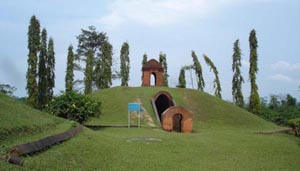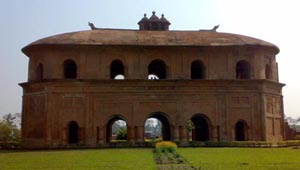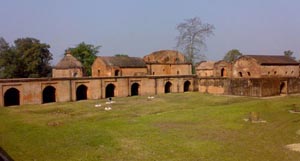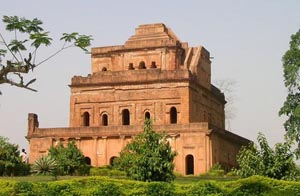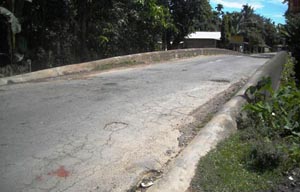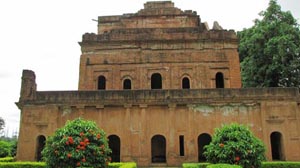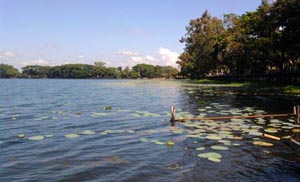Sivasagar Monuments - Historical Places to Visit in Sivasagar
Historical Monuments / Forts / Palaces / Places to Visit in Sivasagar
Here you can check list of names and information on famous historical forts / palaces / monuments / places to visit in Sivasagar, Assam, India. These famous monuments of Sivasagar are most visited and most sought after best tourist places. You can also find images of Sivasagar monuments / places / forts / palaces.
When we talk about its architectural phenomenon than the wisdom of Ahom dominates the entire property. Majestic sculptures and an open spaces around the tombs allows traveler to stroll freely while paying homage to a lost soul. Masons of medieval days have done incredible work to decorate it with perfection. An amazing floral of architecture is defined by its underground vaults where domed chambers is covered by earthen mounds beside that open pavilions of Charaideo would embark the mind of a traveler.
The double storied structure of the complex is decorated by arched entrances, carved stone crocodiles, brick framework and sculptures. The very brilliance of architectural work is defined by its appearance that resembles the shape of the Ahom long boat. While walking the base of the stadium one would have an opportunity to view a series of arched entrances. The entire construction of the amphitheater is done by using baked bricks, paste of rice and egg as mortar to provide that strength to withstand the natural disaster.
The Talatal Ghar is actually an underground barracks and the initial construction for the palace was ordered by Swargadeo Rudra Singha in the year 1698 AD. The structure has three floors and the lowest floor is stated to be linked by a tunnel with the Dikhow River. The Talatal Ghar has two undisclosed tunnels along with three storeys under the ground level which served as emergency exit routes at the time of Ahom wars. Thus, the structure that is the Talatal Ghar includes three underground floors which are not permitted to be accessed by the tourists and had four floors above ground level.
Historically, the Ahom Kingdom was one of most powerful in the Indian state of Assam during their reign. It was during this particular period that the Gargaon palace was made by the King for their personal residence. The foundation stone of the palace was laid in the year 1752 AD under the guidance of King Rajeswar Singha. He was the 15th king of Ahom who ruled over the kingdom of Ahom for a longer period of time.
This particular bridge has a long history of more than 300 years associated with it. The bridge was specifically built during the year 1703 under the reign of the ruler King Rudra Singha. One vital point about the bridge is that it was built entirely by the craftsmen of Bengal which were brought by King Rudra Singha. In the present day context, the bridge is being managed as well as maintained by the government of the state of Assam. The bridge had been built upon the Namdang River of Assam.
The Kareng Ghar has its own historical importance as it itself is located in the historical town of Sivasagar. The place was once used as the capital by the powerful rulers of the Ahom dynasty. Rulers like Swargadeo Rudra Sangha ruled the kingdom more than a span of six hundred years. However, post the advent of British in India, their rule came to an end in this particular region. The capital of Ahom kingdom was shifted by Swargadeo Rudra Sangha from Ghargaon to Rangpur in the year 1702-03 AD.
Historically the structure is one of the oldest in Assam. It is the most remarkable landscape in the town along with the Namdang Bridge. The tank was built in the year 1734 by Queen Ambika who also played a major role while the tank was dugged. The tank was built by the queen in memory of her husband Sri Swargadeo Sivasingha. It is quite important to state the city i.e. Sivsagar has got its name from the tank itself which further depicts the importance of the structure.
- Andaman Nicobar Monuments
- Andhra Pradesh Monuments
- Assam Monuments
- Bihar Monuments
- Chhattisgarh Monuments
- New Delhi Monuments
- Goa Monuments
- Gujarat Monuments
- Haryana Monuments
- Himachal Pradesh Monuments
- Jammu and Kashmir Monuments
- Karnataka Monuments
- Kerala Monuments
- Madhya Pradesh Monuments
- Maharashtra Monuments
- Odisha Monuments
- Punjab Monuments
- Rajasthan Monuments
- Tamil Nadu Monuments
- Telangana Monuments
- Uttar Pradesh Monuments
- West Bengal Monuments
